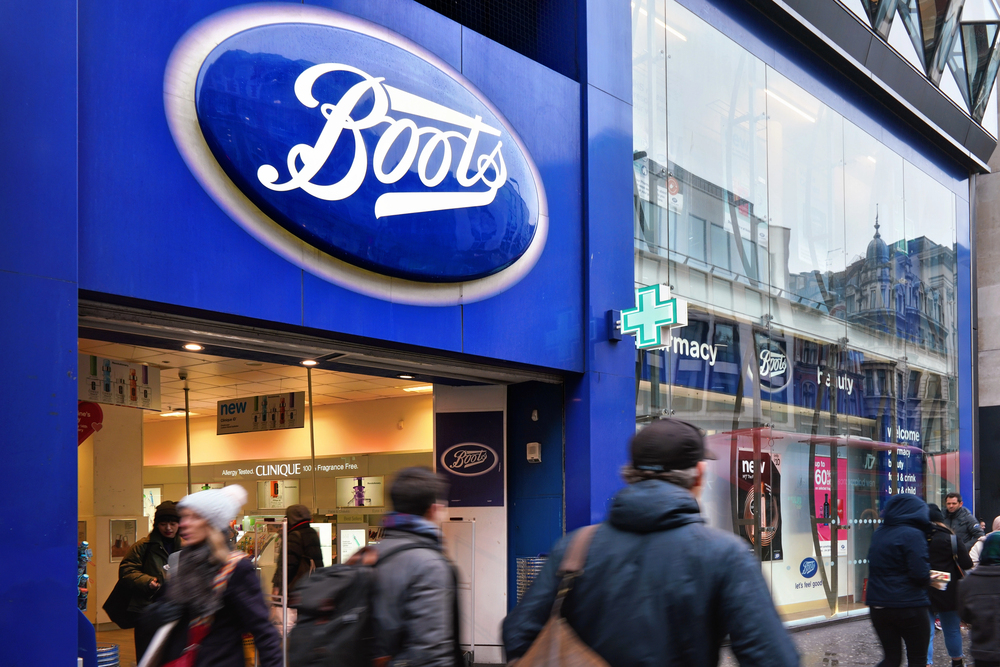The UK retail sector is undergoing significant transformation, with two iconic brands—Boots and Dr. Martens—adapting to economic and consumer shifts through bold strategies. Boots, a cornerstone of British high streets, has reported a substantial profit increase despite closing hundreds of stores, while Dr. Martens is diversifying its product line to revitalise growth. These developments highlight the resilience and strategic foresight driving these companies in a competitive market.
Boots: Profit Growth Through Store Closures
Financial Performance
Boots, the Nottingham-based pharmacy chain, achieved a remarkable financial upturn in the year ending August 2024, even as it reduced its store count by 334, bringing its total to 1,840 from 2,177. The company reports through three entities: Boots UK, The Boots Company plc, and Boots Management Services. Boots UK saw revenue rise from £7 billion to £7.3 billion, with pre-tax profits surging from £60 million to £269 million. Boots Management Services reported a revenue increase from £1.1 billion to £1.16 billion, with pre-tax profits growing from £55.6 million to £61.7 million. However, The Boots Company plc experienced a modest revenue uptick from £179 million to £186 million, but its pre-tax profits dropped from £122 million to £31 million.
The store closures, part of a deliberate portfolio optimisation, incurred £6 million in restructuring costs, down from £38 million the previous year. Boots noted that these closures, totalling 624 to date, enable the company to “concentrate team members where they are needed” and focus investments to ensure “excellent and reliable service.” Retail sales grew 6.6% to £5 billion, though pharmacy revenue fell 2.2% to £2.2 billion. The company declared a £58 million dividend, up from £15 million, reflecting confidence in its financial position.
Strategic Rationale
The decision to close stores aligns with broader retail trends, where companies streamline physical footprints to prioritise high-performing locations and invest in digital channels. Boots’ ability to boost profits despite fewer stores suggests effective cost management and a focus on high-demand services. The pharmacy sector faces challenges, including reimbursement pressures and rising operational costs, yet Boots’ retail arm has capitalised on consumer spending in beauty and personal care, driving sales growth. The company’s investment in IT projects, included in restructuring costs, indicates a push toward digital transformation, potentially enhancing online sales and customer engagement.
Boots: Leadership and Ownership Changes
New Management
In September 2024, Anthony Hemmerdinger became Boots’ managing director, succeeding Seb Jones. Hemmerdinger faces immediate challenges, including “heightened cost pressures” following the Autumn Budget, which introduced tax and wage increases impacting retailers. Despite these headwinds, he emphasised a commitment to “long-term, sustainable growth.” Boots reported an 8.1% year-on-year increase in comparable retail sales for the quarter ending November 30, 2024, driven by strong performance in beauty and seasonal products.
Acquisition and IPO Plans
Boots’ parent company, Walgreens Boots Alliance, abandoned plans for an initial public offering (IPO) last year. Instead, Walgreens agreed to a $10 billion (£7.8 billion) acquisition by US private equity firm Sycamore Partners, expected to close by year-end. The deal’s impact on Boots, a fixture since 1849, remains unclear. Private equity ownership could bring operational changes, such as further cost-cutting or expansion, but Boots’ strong UK performance suggests stability. The acquisition may also provide capital to enhance digital platforms or refurbish flagship stores, aligning with consumer preferences for seamless omnichannel experiences.
Dr. Martens: Expanding Beyond Boots

New Strategy
Dr. Martens, known for its iconic boots, is pursuing a “Levers for Growth” strategy to become “the world’s most-desired premium footwear brand.” The company is diversifying into shoes, sandals, and bags, aiming for a mid to high-teens EBIT margin. Chief Executive Ije Nwokorie outlined a “consumer-first mindset,” tailoring distribution to blend direct-to-consumer and business-to-business channels for better brand reach and capital efficiency. The strategy follows a tough 2024, with revenue down 10% to £787.6 million. Direct-to-consumer sales, 64.8% of earnings, fell 4.2%, while wholesale revenue dropped 19.5%. Adjusted earnings before interest and tax fell from £126.4 million to £60.7 million, and profit before tax declined from £93 million to £8.8 million.
Despite these challenges, Dr. Martens met its 2024 goals: resuming growth in the Americas, cutting costs, enhancing marketing, and strengthening its balance sheet. Nwokorie highlighted the brand’s potential, noting it holds just 0.7% of a £179 billion market. Shares rose nearly 13% in early trading, reflecting investor optimism.
Market Opportunities
The pivot to a broader product range targets younger, trend-conscious consumers. Products like the £70 Blaire Patent Leather Gladiator Sandals aim to capture demand for versatile footwear. Dr. Martens’ direct-to-consumer focus aligns with retail trends favoring brand-controlled channels, which offer higher margins and customer data. The company’s global presence, particularly in the Americas, provides growth opportunities, supported by its cultural cachet and loyal customer base.
Dr. Martens: Risks of Diversification
Brand Identity Concerns
Analyst Dan Lane warned that Dr. Martens lacks heritage in non-boot categories, risking its anti-establishment image. “The company made its name in boots,” Lane said. “Straying too far could dilute the brand.” He contrasted Dr. Martens with Burberry, which successfully refocused on its core identity. The success of the new strategy hinges on balancing innovation with the brand’s rebellious roots. Overextension into unfamiliar categories could alienate core customers, particularly if quality or design falters.
Operational Challenges
Dr. Martens’ wholesale struggles reflect broader retail dynamics, where partners prioritize faster-moving inventory. The company’s cost-cutting and marketing enhancements aim to address these issues, but economic uncertainty and competition from premium brands like Nike or Veja pose threats. Nwokorie’s confidence in “sustainable, profitable growth” rests on leveraging the brand’s cash flow and operational strength, but execution will be critical.
Retail Resilience in Focus
Boots and Dr. Martens illustrate the complexities of modern retail. Boots’ store closures and profit surge demonstrate the value of strategic focus, even amid leadership transitions and ownership changes. Its ability to grow retail sales while navigating pharmacy challenges positions it as a leader in the sector. Dr. Martens’ diversification reflects a bold bid to expand its market share, though it must preserve its unique identity to succeed.
Both companies face economic pressures, including rising costs and shifting consumer behaviors. Boots benefits from its established infrastructure and broad appeal, while Dr. Martens leverages its cultural relevance to explore new categories. Their stories underscore the need for agility, whether through streamlining operations or reimagining brand offerings. As UK retail evolves, Boots and Dr. Martens are poised to shape its future, blending heritage with innovation to meet the demands of a dynamic market.







